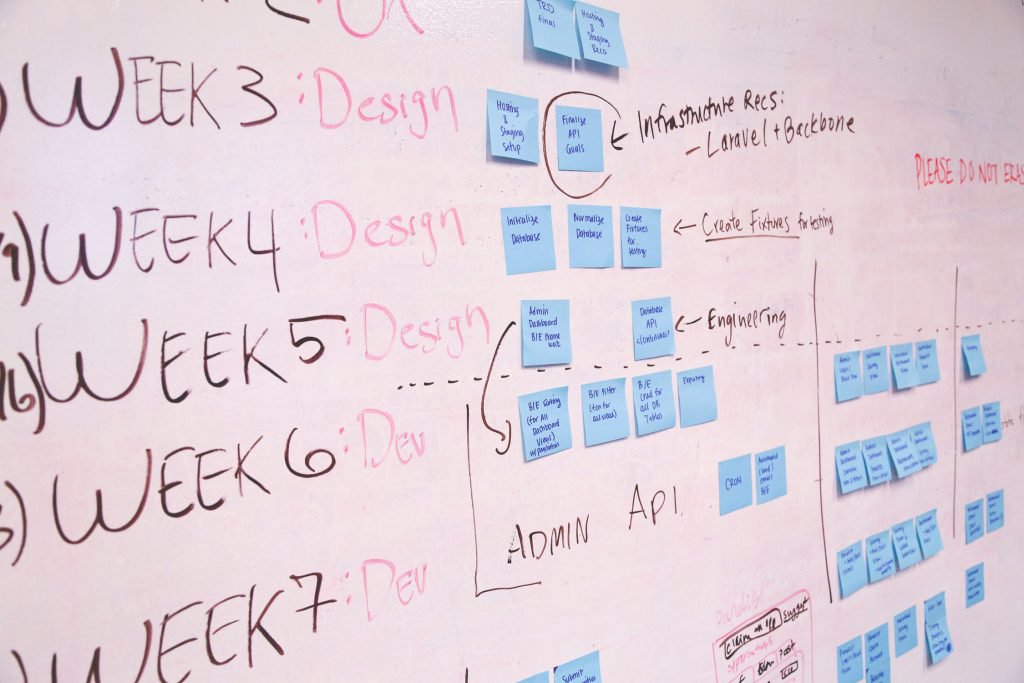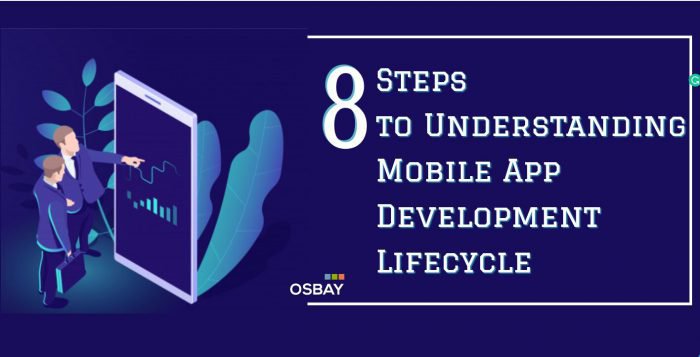8 Steps to Understanding Mobile App Development Lifecycle
If you want to develop a mobile app for your business, you are in the right place. Research shows that mobile users spend most of their time on apps when using their phones. But even if there is evidence that favor mobile apps, getting started is not as simple as it seems.
With App Store, Microsoft store, and Google Play Store containing more than 1.5 million apps each, it is crucial that you first understand the process of developing a mobile app and how to ensure that your app suits both your marketing goals and industry requirements. In this article, we will discuss the steps toward understanding the process of developing a mobile app.
Let’s dive in.
Inspiration and Market Research

You might already be having some excellent ideas for your business mobile app, and that is an excellent position to get started. Before you get to the mobile software development and design phase, you need to do thorough research on your competitors, target audience, and your business. You will need to establish what you want your app to accomplish and where it fits in your marketing strategy. Also, you will require to establish the way you want the consumers to use the app, the best mobile app development company to use, your budget, development timeline as well as the app marketing strategy.
If you have not determined that, you can give the information you collected from the discovery and research phase to a mobile app development companies for assistance. You can even ask them to provide you with their mobile app development to ascertain their expertise. Informed assessment in the initial stages allows for a smooth development process.
Setting Goals and Targets for Your Mobile App

After discovering the app, you want, you will need to outline how the app will take you there. You should determine how you want the app to assist its users, its features, and its central appeal.
In most cases, establishing the benefits and features of your app acts as a way to show your internal capabilities and your mobile software development budget. The best mobile app development are the ones that feature a design the focuses on engaging customers rather than exclusive services.
At this step, you need to have an idea of how your app will be looking like and the features it will include. You should also outline your scope of work at this stage.
Creating the App Wireframes, Storyboards, And Backend

It is now time to begin sketching the app and developing storyboards. There is various mobile app development software that you can utilize to wireframe your app. Your objective here is to create an outline of how the proposed features and your ideas will fit together in a working app. Also, you should craft a storyboard to show the links between screens and the way users will surf through. So, you should focus on enhancing the user experience. You can learn how to make your app user-friendly by looking at various mobile app development across the internet.
The storyboard and wireframes will act as guides for the backend elements you will need to sustain your app like data integration, servers, push notifications, and APIs. You might require to modify the storyboard and/or wireframes if you get technical issues during backend app development process to ensure flexibility as early as this stage.
This is a technical stage. So, you should consider using mobile
Finish Wireframing And Examine Your Prototype

Here, you should make all the wireframe changes identified during the process of developing your app backend. Now it is time to develop a prototype to evaluate the design and determine the possible issues. There are many excellent mobile app development examples for prototyping apps online to facilitate this process.
When testing the prototype, it is good to invite experts outside the development team. Request them to give you honest feedback. Your aim here is to develop a prototype that will act as a guide during the real app development step.
App Development

There are various processes involved in this step. Your developer has to create a real storage solution, a database, servers, and APIs for your app’s backend. Also, you need to create app store accounts in the platforms you wish to utilize to distribute the app. Ensure that you are conversant with the rules and regulations of the stores to avoid the app being rejected during the review.
If you are not a mobile app developer, you need the help of mobile app development agencies to do the coding and programming part for you.
App Testing

After creating the app, it is now time to test it for real-world chores to identify any flaws. Use your initial planning and designing documents to check the features. Allow others also to test the app to verify the user experience. Ensure that you test for its compatibility with multiple platforms. You can look for mobile app development examples online to learn more.
Planning to Launch

The way you plan to launch your app may be the most significant factor that determines the overall success of the app. You should do keyword and market research to guide your app title and description choices as you plan to release your app in different markets for distribution. It is crucial for increasing your discoverability and brand awareness.
Also, ensure that you promote the app on various platforms before its release to keep the audience anticipating.
Official Launching

This step represents the end of your development lifecycle. Ensure that you promote the release through social media, emails, and your website. The objective here is to get ratings and downloads and develop a certain momentum. Also, don’t forget that app promotion is a continuous process.
With these steps, you are now better prepared to design an app with the features you need – on a timeframe and budget that you can manage comfortably. Osbay is all you need. We have qualified software developers and engineers to make sure that your system runs to your expectations. Contact us on our website via Osbay to learn more about our services.


